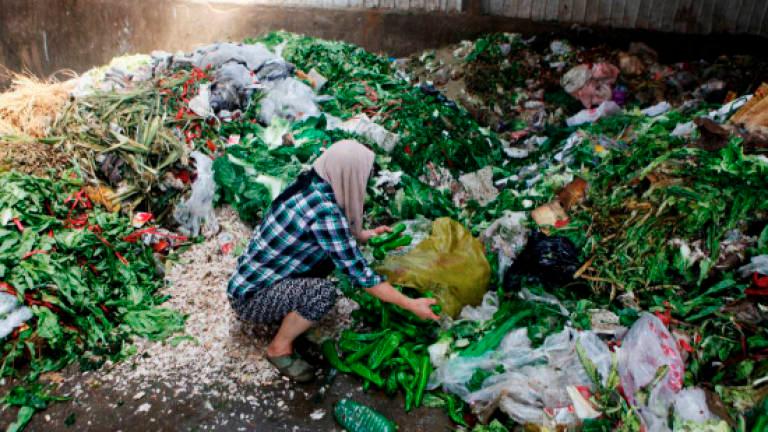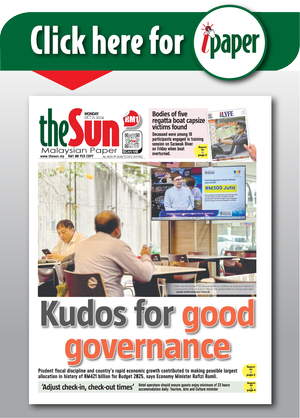PETALING JAYA: At a time when food security is on everyone’s lips and the government is seeking to address the matter through various initiatives, up to 17,000 tonnes of perfectly good food is wasted daily by Malaysians.
According to research published last year by the Solid Waste Management and Public Cleaning Corporation, a department under the Local Government Development Ministry, about 24% or 4,005 tonnes of such food is still edible.
Enter The Lost Food Project (TLFP). From 2016 to the end of last year, the NGO located in Jalan Chan Sow Lin in Kuala Lumpur has “rescued” 4,592,349kg of food from entering landfills, provided 14,319,341 meals to the hungry, and prevented 11,480,873kg of greenhouse gases from being released into the atmosphere.
On average, it saves 602,268kg of food annually for redistribution to charities in the Klang Valley.
TLFP was founded by a British, Suzanne Mooney, who first encountered the problems of food waste while working at a restaurant in Cape Town, South Africa.
Although the restaurant was efficiently run, it still threw out buckets of good food every night. While she could not persuade her restaurant to give it to the staff, she convinced the management to donate the surplus food to a local soup kitchen.
“Years later, I moved to Malaysia with my husband and children, and each time I spoke to individuals and communities in the lower-income group, the one thing they always said is that they needed food.
“Soon, I discovered there were no professional food banks regularly collecting the surplus from supermarket chains or manufacturers. With this knowledge, and considering the enormous amount of food thrown away daily, I set about organising TLFP to bridge the hunger gap in Malaysia.”
TLFP was registered in April 2016 and started collecting food from supermarkets, and companies such as Nestle, Procter and Gamble, Unilever, DKSH, Nandos, Lavender, Komugi, BreadStory and The Food Purveyor. Within three years, it evolved into the leading food rescue organisation in Malaysia.
But what exactly is lost food? TLFP CEO Ab Wahab Long told theSun that it is good food that is not consumed for various reasons, such as the near expiration date, and bruised fruits and vegetables that are still fresh and edible.
“Besides that, surplus food can arise at different stages of a production process, such as taking product orders to quality control. They include canned, chilled and frozen foods.
“Food surpluses occur due to an excess of products that are close to their ‘best-before’ or ‘use-by’ date, ingredients and finished products that fail to meet customer specifications, slow-moving stocks or deleted lines, products that are incorrectly labelled or have none, those with damaged packaging, and even uneaten, leftover food from breakfast, lunch or dinner.
Ab Wahab said food waste is an international problem.
“Globally, if food waste can be represented as a country, it would be the third largest emitter of greenhouse gases. There are many reasons there is so much excess food, but what happens with it is what matters most. Food loss and food waste represent a highly inefficient use of resources globally.
“About 30% of food produced for human consumption around the world is either lost or wasted each year. This is equivalent to 1.3 billion tonnes of food – a number that is more than enough to feed the world’s hungry four times over,” he said.
Ab Wahab added that Malaysian households produce the most food waste, at 38% compared with wet markets at 24%, restaurants at 23% and hotels at 7%.
“The average Malaysian throws away 1.64kg of food daily, compared with the global average of 1.2kg.
“Currently, TLFP (prevents) an average of 10 tonnes of food per week from going to landfills. This means we save just 1% of the food being thrown away. We have plans to rescue much more, but we need everyone to play their part in being aware of the problem.
“At the moment, we are conducting knowledge-sharing sessions and awareness campaigns throughout universities, schools and corporations. We also plan to have more awareness campaigns among the public to emphasise the scale of the problem.
“Our base and volunteer network in the Klang Valley will also be expanded to East Malaysia. This will happen once more volunteers, donors, and logistics partners come on board.”
Ab Wahab said in the long term, TLFP is looking for innovative ways to deal with wasted cooked food, such as a mobile app or a food retort machine, which is a pressure vessel to “commercially sterilise” foods after they have been placed into containers and hermetically sealed. Such foods can be served as packed meals during disasters.
“According to the 2022 Global Food Security Index, the majority of the world’s hungry live in developing countries, where 12.9% of the population is undernourished.
“Malaysia had a hunger score of 69.9 of 100 last year (where 100 is the most favourable). We can certainly do much better.
“The key is to educate Malaysians not to waste food, and to give it to those in need. If every country does this, we can save the world from hunger,” said Ab Wahab.









